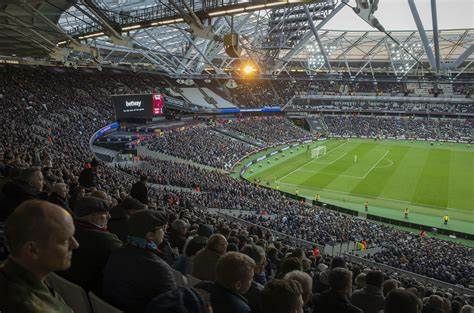The Premier League clash between West Ham United and Burnley FC on March 10, 2024, at the London Stadium concluded in a 2-2 draw, offering fans a thrilling encounter marked by strategic depth and individual brilliance. This article delves into the lineups, tactical formations, and key performances that defined this match, providing an in-depth understanding of both teams’ approaches.
West Ham United’s Starting XI and Tactical Setup
Manager David Moyes opted for a 4-2-3-1 formation, emphasizing both defensive solidity and attacking flexibility. The lineup was as follows:
Goalkeeper: Alphonse Areola
Defenders: Vladimir Coufal (Right Back), Konstantinos Mavropanos (Center Back), Nayef Aguerd (Center Back), Aaron Cresswell (Left Back)
Defensive Midfielders: Tomáš Souček (Captain), Kalvin Phillips
Attacking Midfielders: Jarrod Bowen (Right Wing), James Ward-Prowse (Central Attacking Midfield), Lucas Paquetá (Left Wing)
Striker: Mohammed Kudus
This setup aimed to leverage the creative prowess of Paquetá and Ward-Prowse, while relying on Souček and Phillips to provide defensive cover and facilitate transitions.
Burnley FC’s Starting XI and Tactical Setup
Under the guidance of manager Vincent Kompany, Burnley employed a 4-4-2 formation, focusing on defensive organization and quick counter-attacks. The lineup included:
Goalkeeper: James Trafford
Defenders: Ludovic Assignon (Right Back), Dara O’Shea (Center Back), Maxime Estève (Center Back), Charlie Taylor (Left Back)
Midfielders: Vitinho (Right Midfield), Sander Berge (Central Midfield), Josh Cullen (Captain, Central Midfield), Wilson Odobert (Left Midfield)
Forwards: Jacob Bruun Larsen, David Datro Fofana
This formation was designed to maintain a compact defensive structure, with Cullen orchestrating play from midfield and Fofana providing a dynamic attacking threat.
Key Moments and Tactical Shifts
The match unfolded with Burnley taking an early lead in the 11th minute, as David Datro Fofana unleashed a powerful long-range strike that found the top corner, leaving Areola with no chance.
As the first half drew to a close, Burnley doubled their advantage. In stoppage time, a well-constructed move culminated in Josh Cullen delivering a low cross into the box, which was inadvertently turned into the net by West Ham’s Konstantinos Mavropanos for an own goal.
Facing a two-goal deficit, David Moyes made decisive changes at halftime, introducing Michail Antonio and Edson Álvarez, and shifting to a more attacking 4-2-4 formation. This tactical adjustment paid immediate dividends, as Lucas Paquetá capitalized on a defensive error just 28 seconds into the second half, calmly slotting the ball past Trafford to reduce the deficit.
West Ham sustained their offensive pressure throughout the second half, creating multiple scoring opportunities. Their persistence was rewarded in stoppage time when substitute Danny Ings found the back of the net, securing a dramatic equalizer and ensuring the match ended in a 2-2 draw.
Player Performances and Tactical Implications
Lucas Paquetá: Operating from the left wing, Paquetá was instrumental in West Ham’s attacking endeavors, contributing a goal and consistently threatening Burnley’s defense with his creativity and vision.
Tomáš Souček and Kalvin Phillips: The midfield duo provided a robust defensive shield, breaking up Burnley’s attacks and facilitating quick transitions to offense, embodying the balance between defense and attack in Moyes’ system.
David Datro Fofana: His early goal exemplified Burnley’s strategy of exploiting quick transitions and long-range efforts, highlighting his ability to capitalize on limited opportunities.
Josh Cullen: As Burnley’s captain and midfield lynchpin, Cullen’s distribution and leadership were pivotal in maintaining their defensive shape and orchestrating counter-attacks.
Fan Engagement and Tactical Discussions
The match sparked extensive discussions among fans and analysts, particularly regarding Moyes’ tactical adjustments and the impact of halftime substitutions. The decision to adopt a more aggressive formation in the second half was widely praised for its effectiveness in overturning the two-goal deficit.
Conversely, Burnley’s initial success in the first half showcased their tactical discipline and ability to execute a well-structured game plan, reflecting Kompany’s emphasis on defensive organization and opportunistic attacking.
FAQs
How did the formations affect the gameplay?
West Ham’s 4-2-3-1 provided flexibility between defense and attack, with Ward-Prowse and Paquetá playing key roles in linking play. Burnley’s 4-4-2, meanwhile, prioritized compactness in defense and relied on Cullen to control the midfield and orchestrate counter-attacks. This clash of styles made for an intense and tactically rich encounter.
Were there any notable absentees in the lineups?
Yes, West Ham was without their influential forward Michail Antonio in the starting lineup, though he made an appearance as a substitute. Burnley missed Johann Berg Gudmundsson due to injury, which impacted their wing play and creativity.
Which substitutions had the most impact?
David Moyes’ decision to bring on Michail Antonio and Edson Álvarez at halftime significantly altered the game for West Ham. The changes added energy and attacking depth, contributing to their second-half comeback. For Burnley, the introduction of Anass Zaroury in the latter stages helped stabilize their midfield but wasn’t enough to prevent West Ham’s equalizer.
What tactical adjustments were made during the game?
West Ham shifted to a more aggressive 4-2-4 formation in the second half to chase the game, a move that paid off with two goals. Burnley maintained their defensive shape but struggled to handle West Ham’s high press and increased attacking intensity.
How did fans and analysts react to the lineups?
Fans praised Moyes’ halftime adjustments, highlighting his tactical acumen. Burnley’s initial defensive setup received mixed reviews, with some lauding their discipline and others questioning their inability to maintain the lead.
What lessons can be learned from the match?
The match demonstrated the importance of in-game adaptability. West Ham’s comeback highlighted the value of effective substitutions and tactical flexibility, while Burnley showed that maintaining defensive discipline is crucial when under pressure.
In Summary
The West Ham vs. Burnley F.C. match offered a thrilling spectacle of tactical ingenuity and individual brilliance. Both teams showcased their strengths, with West Ham demonstrating resilience and adaptability to secure a draw, while Burnley highlighted their potential in structured play. The lineups, substitutions, and strategies provided fans and analysts with much to discuss, making this match a memorable chapter in the Premier League season.
To read more, Click Here.
